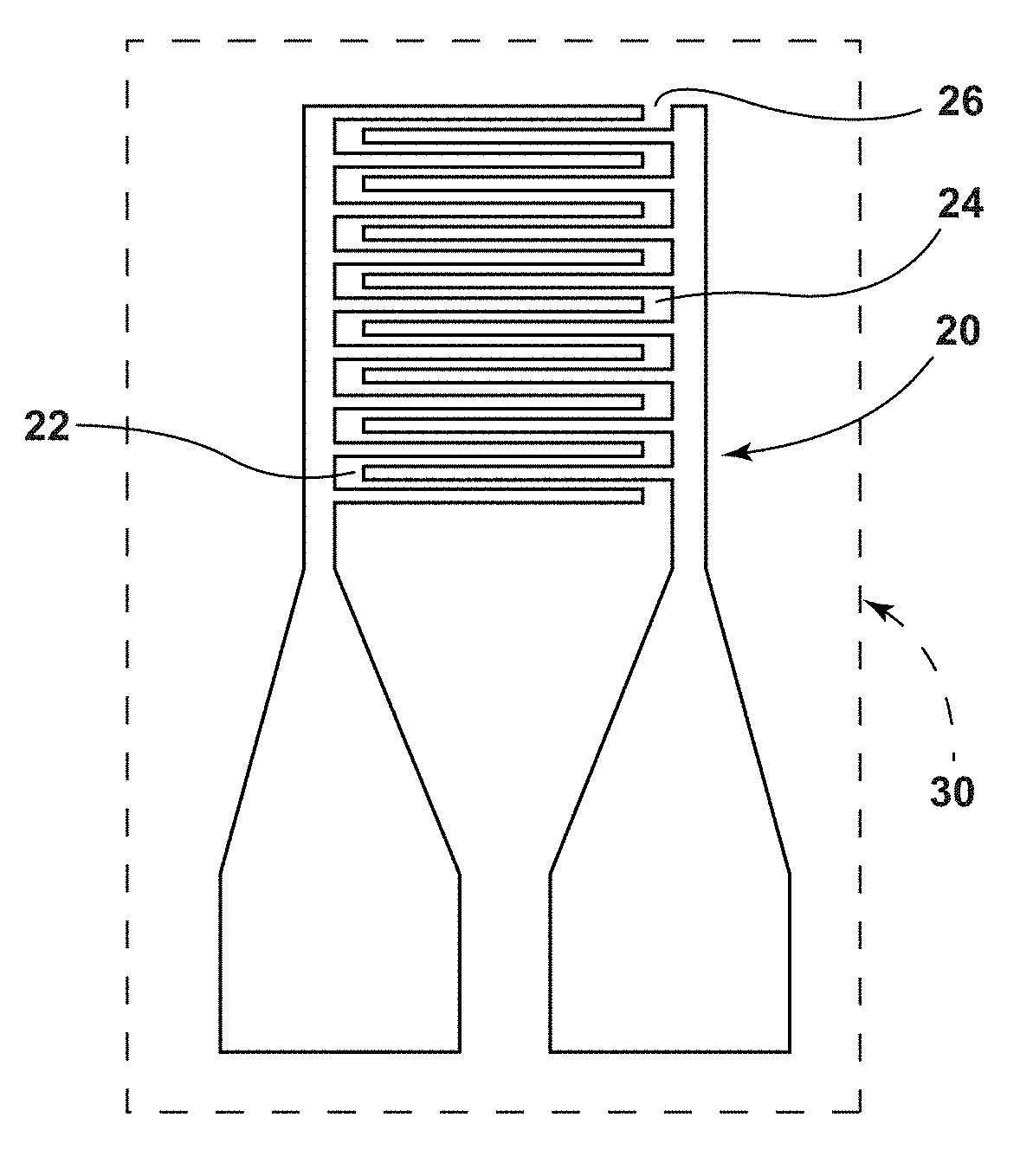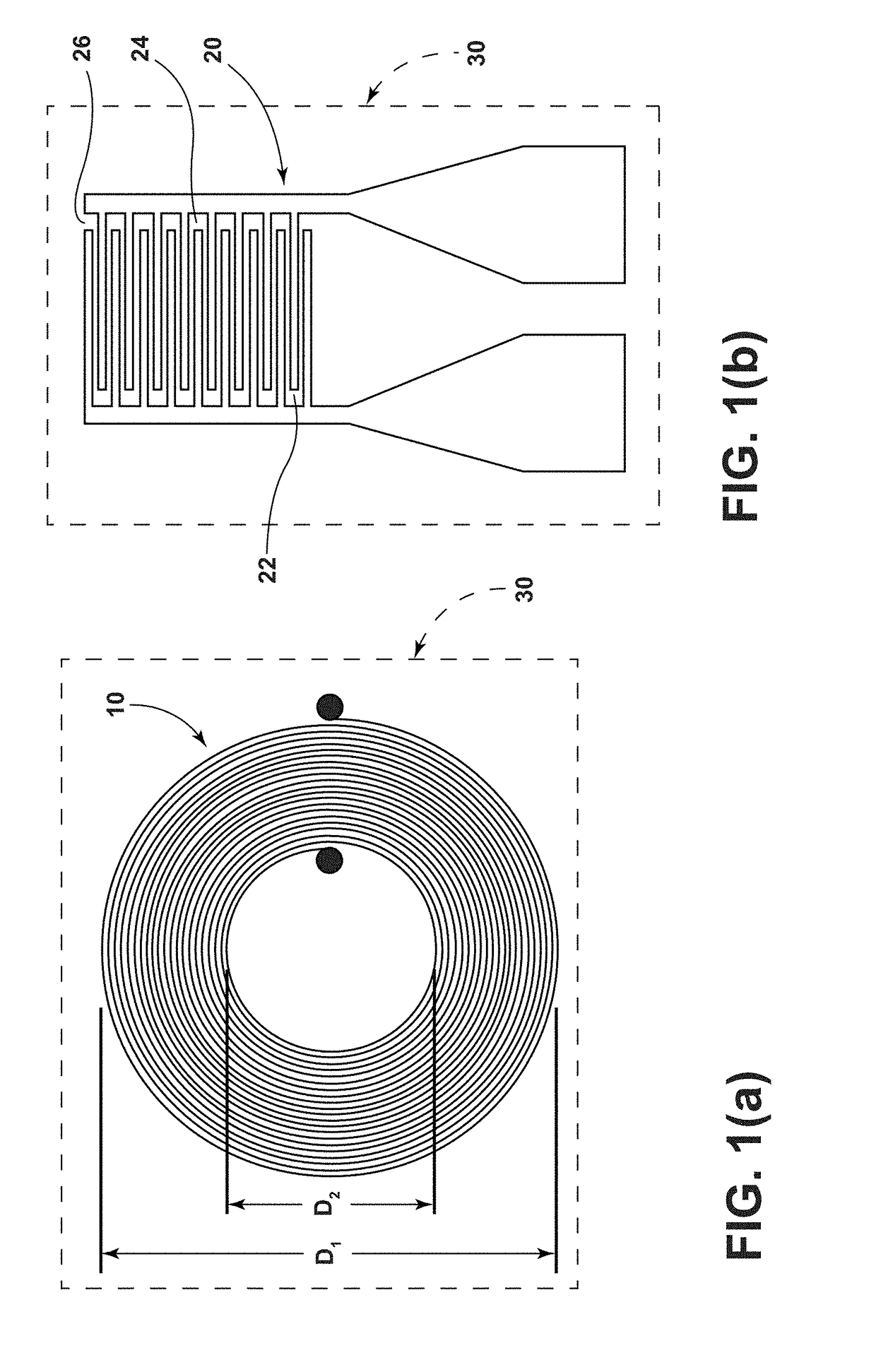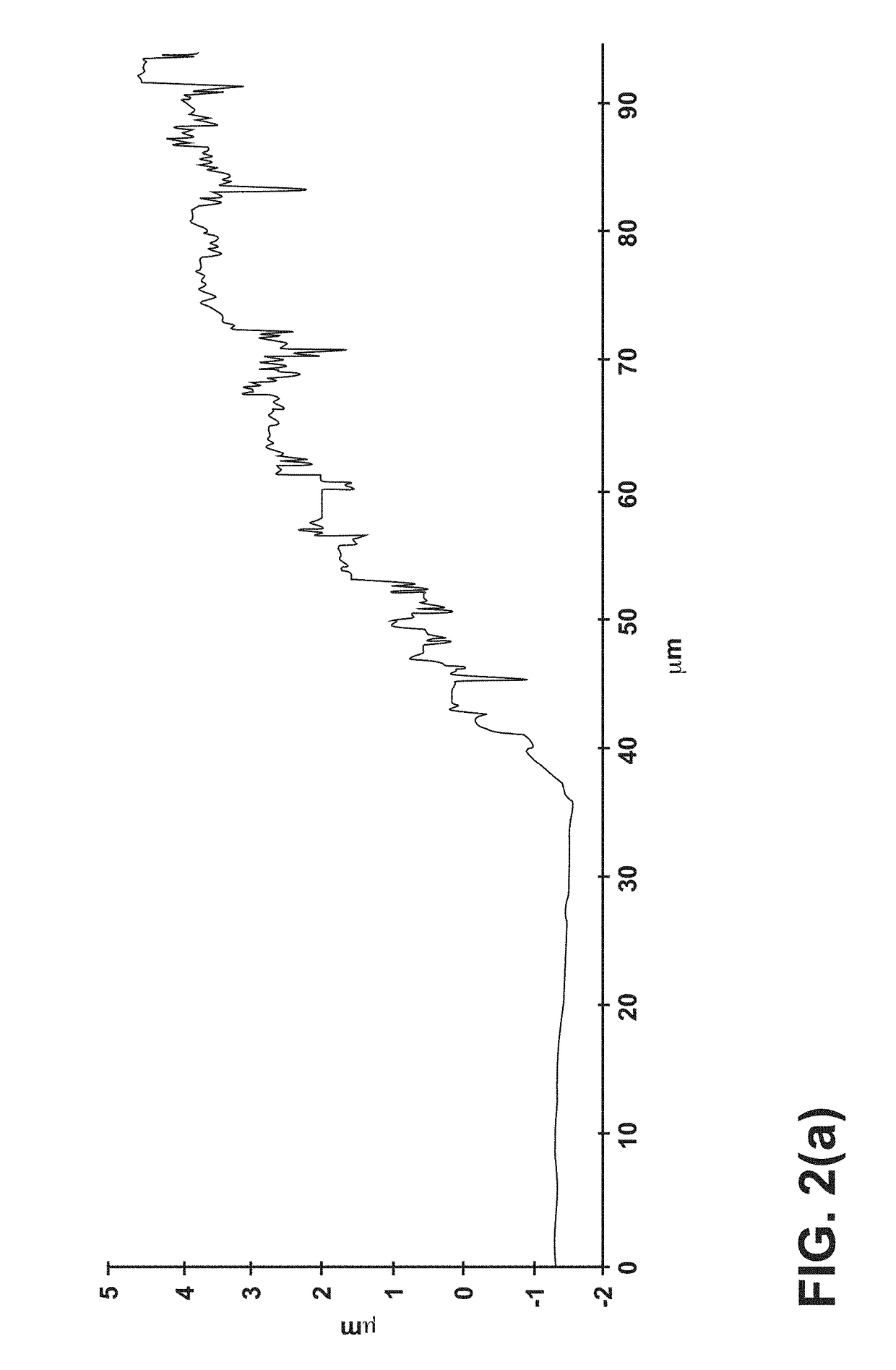Printed wireless inductive-capacitive (LC) sensor for heavy metal detection
a wireless inductive capacitive and sensor technology, applied in metal/metal-oxide/metal-hydroxide catalysts, physical/chemical process catalysts, instruments, etc., can solve problems such as heavy metal contamination, metals may be toxic at higher concentrations, and various diseases in humans and animals
- Summary
- Abstract
- Description
- Claims
- Application Information
AI Technical Summary
Problems solved by technology
Method used
Image
Examples
example
A. Materials, Chemicals and Sample Preparation
[0017]Melinex® ST 505, a flexible PET of 130 μm thickness, (available from DuPont Teijin Films) was used as the substrate. A silver flake ink (Henkel Electrodag 479SS) was used for metalizing the coplanar LC sensor. Dodecyl sulfide, Mercury nitrate (Hg(NO3)2), and Lead Nitrate (Pb(NO3)2) (all in powder form) were purchased from Sigma-Aldrich chemical company. Palladium acetate [Pd3(OAc)6] was purchased from Strem Chemicals (Newbury Port, Mass.). Various concentrations of Hg2+ and Pb2+ (1 nM, 1 μM, 50 μm, 250 μm, 500 μm, 750 μm and 1 mM) were prepared by dissolving mercury nitrate (Hg(NO3)2) and lead nitrate (Pb(NO3)2) in deionized (DI) water. The prepared solutions were stored in 10 mL aliquots at 2° C.
B. Synthesis of Pd NPs
[0018]Pd NPs were used as sensing layers for the detection of heavy metal ions. Pd NPs are synthesized by modified pyrolysis reaction. 0.05 g of 0.075 mM Pd3(OAc)6 and 0.14 g of 0.37 mM n-dodecyl sulfide was added to ...
PUM
| Property | Measurement | Unit |
|---|---|---|
| inner diameter | aaaaa | aaaaa |
| width | aaaaa | aaaaa |
| width | aaaaa | aaaaa |
Abstract
Description
Claims
Application Information
 Login to view more
Login to view more - R&D Engineer
- R&D Manager
- IP Professional
- Industry Leading Data Capabilities
- Powerful AI technology
- Patent DNA Extraction
Browse by: Latest US Patents, China's latest patents, Technical Efficacy Thesaurus, Application Domain, Technology Topic.
© 2024 PatSnap. All rights reserved.Legal|Privacy policy|Modern Slavery Act Transparency Statement|Sitemap



